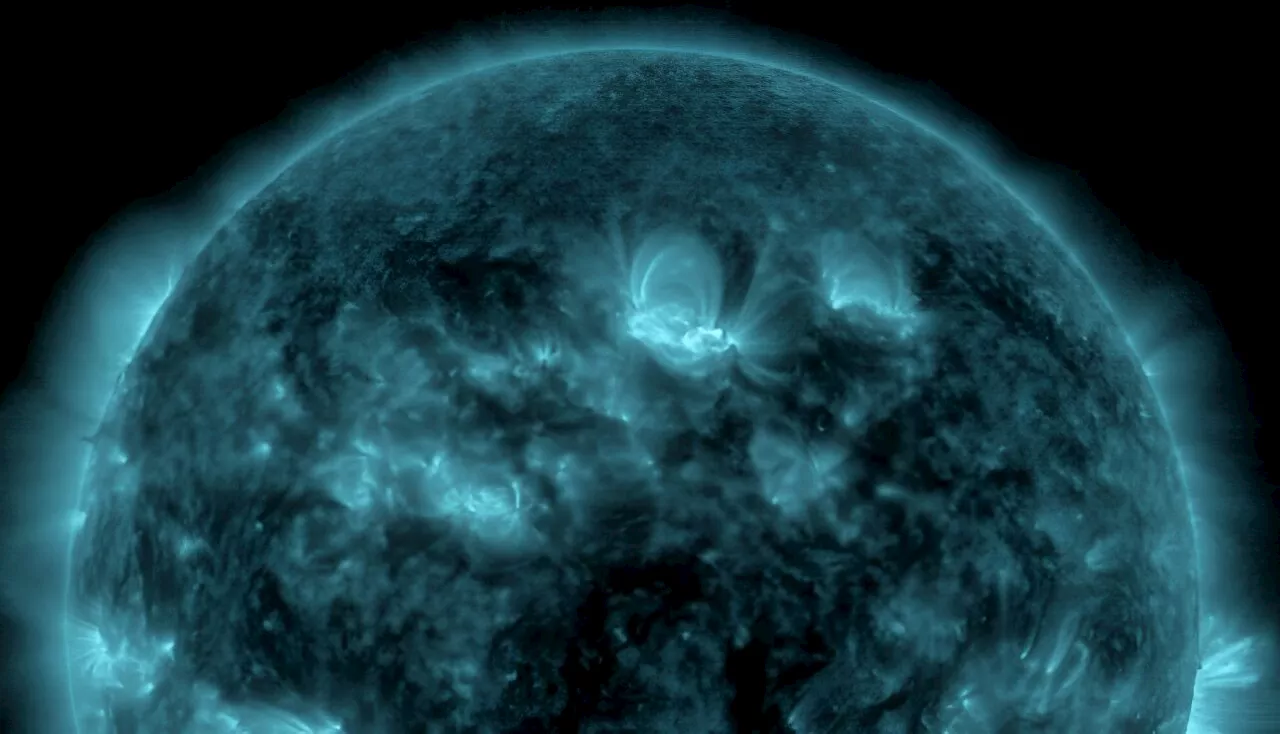Science, Space and Technology News 2024
NASA’s Solar Dynamics Observatory captured this image of a solar flare – as seen in the bright flash on the right – on May 15, 2024. The image shows a subset of extreme ultraviolet light that highlights the extremely hot material in flares and which is colorized in teal. Credit: NASA/SDO’s Solar Dynamics Observatory, which continually monitors the Sun, captured images of two powerful X-class solar flares. The first was classified as an X3.4 class flare and peaked at 4:37 a.m. ET.
The impact on Earth primarily involves the interaction of solar radiation with Earth’s magnetic field, which can lead to geomagnetic storms. These storms can disrupt technology and infrastructure and expose astronauts and high-altitude flights to higher levels of radiation. Solar flares are categorized by their intensity in the X-ray wavelengths, ranging from class A to class X . Each class has a tenfold increase in energy output, and within each class, a finer scale from 1 to 9 further distinguishes the flare’s strength. X-class flares are the largest explosions in the solar system and can trigger planet-wide radio blackouts and long-lasting radiation storms.
United Kingdom Latest News, United Kingdom Headlines
Similar News:You can also read news stories similar to this one that we have collected from other news sources.
![Rapid-Fire Solar Flares Unleashed: NASA Witnesses 82 Intense Flares This Week [Video]](https://i.headtopics.com/images/2024/5/11/scitechdaily1/rapid-fire-solar-flares-unleashed-nasa-witnesses-8-rapid-fire-solar-flares-unleashed-nasa-witnesses-8-79D581F587722CE8378D2FFDCE4123B9.webp?w=640) Rapid-Fire Solar Flares Unleashed: NASA Witnesses 82 Intense Flares This Week [Video]Science, Space and Technology News 2024
Rapid-Fire Solar Flares Unleashed: NASA Witnesses 82 Intense Flares This Week [Video]Science, Space and Technology News 2024
Read more »
 Solar Fury Unleashed: Twin X-Class Flares Light Up the SkyScience, Space and Technology News 2024
Solar Fury Unleashed: Twin X-Class Flares Light Up the SkyScience, Space and Technology News 2024
Read more »
 Solar max is coming—the sun just released three X-class flaresThe sun is increasing its intensity on schedule, continuing its approach to solar maximum. In just over a 24-hour period on May 5 and May 6, 2024, the sun released three X-class solar flares measuring at X1.3, X1.2, and X4.5.
Solar max is coming—the sun just released three X-class flaresThe sun is increasing its intensity on schedule, continuing its approach to solar maximum. In just over a 24-hour period on May 5 and May 6, 2024, the sun released three X-class solar flares measuring at X1.3, X1.2, and X4.5.
Read more »
 More geomagnetic storms remain likely on Monday as sun continues to erupt X-class flaresThe forecasted conditions come after a weekend of jaw-dropping northern lights seen as far south as Florida and as 'magnetically complex' sunspots bigger than Earth continue to emit solar flares.
More geomagnetic storms remain likely on Monday as sun continues to erupt X-class flaresThe forecasted conditions come after a weekend of jaw-dropping northern lights seen as far south as Florida and as 'magnetically complex' sunspots bigger than Earth continue to emit solar flares.
Read more »
 More geomagnetic storms remain likely for today as sun continues to erupt X-class flaresThe forecasted conditions come after a weekend of jaw-dropping northern lights seen as far south as Florida and as 'magnetically complex' sunspots bigger than Earth continue to emit solar flares.
More geomagnetic storms remain likely for today as sun continues to erupt X-class flaresThe forecasted conditions come after a weekend of jaw-dropping northern lights seen as far south as Florida and as 'magnetically complex' sunspots bigger than Earth continue to emit solar flares.
Read more »
 5 Things to Know About NASA’s Tiny Twin Polar SatellitesCalled PREFIRE, this CubeSat duo will boost our understanding of how much heat Earth’s polar regions radiate out to space and how that influences our climate.
5 Things to Know About NASA’s Tiny Twin Polar SatellitesCalled PREFIRE, this CubeSat duo will boost our understanding of how much heat Earth’s polar regions radiate out to space and how that influences our climate.
Read more »
